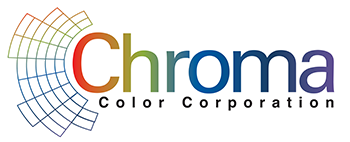With an increasing demand in the medical plastics market globally, manufacturers are pioneering high-quality resins that raise the standards of excellence in health care. Advancements in plastics are curbing medical costs and enhancing patient safety.
Medical-grade plastics are designed to meet stringent regulatory requirements and may also be chemical-, corrosion- and temperature-resistant. Unlike the glass, ceramic and metal products of yesteryear, plastics create low-cost, lightweight and durable equipment and devices that are easier to use and more comfortable for patients. With the over-65 population in the United States expected to outnumber the under-18 age group by 2034, there’s never been a bigger need for advances in medical plastics.
With the increased demand, the medical plastics industry has been utilizing advancements that are improving product performance and design, including:
- End-to-end traceability
Since 2013, the U.S. Food and Drug Administration (FDA) has required numeric or alphanumeric codes on specific medical devices to improve traceability. These unique device identifiers (UDI) help manufacturers track medical device adverse events and identify the need for recalls.
Beginning on Sept. 24, 2020, all Class I devices and unclassified devices must bear a UDI label or mark. Class I includes bandages and nonelectric wheelchairs and accounts for 47% of medical devices.
End-to-end traceability provides information about the lifecycle of the product, from its origins to usage. It also helps drive down counterfeiting, minimizes liability and provides healthcare workers and patients with peace of mind.
- ISO certification
Medical plastics manufacturers seek International Organization for Standardization (ISO) certification because it demonstrates excellence and a commitment to global standards. The ISO – an independent, non-governmental organization – establishes guidelines, specifications and requirements to ensure safety and quality in industries that include medical plastics. Two ISO standards have become synonymous with excellence in medical plastics:
- ISO 9001
As the ISO’s flagship quality management standard, the ISO 9001 certification confirms a company’s abilities to provide consistent quality, meet customer needs and comply with regulatory requirements. The latest revision, ISO 9001:2015, is based on the plan-do-check-act (PDCA) cycle, a four-step model for continuous improvement. After a company has integrated ISO 9001 standards, a third party to verify compliance regularly audits it.
- ISO/IEC 17025
Used in a laboratory setting, ISO/IEC 17025 stipulates the technical competencies and management system requirements to deliver valid test results and calibrations consistently. Due to the universally accepted set of standards, ISO/IEC 17025 allows for collaboration among laboratories worldwide.
- Quality materials
Today, manufacturers are less concerned with the price of materials than the quality to align with the needs of the market and changes in government regulations.
High-caliber medical thermoplastics – such as polyvinyl chloride (PVC), polyethylene (PE) and polystyrene (PS) – and thermoplastic elastomer (TPE) compounds made with FDA-compliant ingredients remain critical to the medical device design process. At the same time, the market for polycarbonates, ABS, polyamides and polyetheretherketones (PEEKs) is expanding.
- Dynamic color and antimicrobial properties
Healthcare providers are continually seeking new approaches to influence patients. Color and antimicrobial properties, in different ways, help achieve results.
Color helps users recognize tools, remember instructions and identify instruments. In medical plastics, vibrant and long-lasting colors are essential to patient and user safety. Companies that include Chroma Color Corporation have been developing technology that makes the colorant less expensive without sacrificing quality. Chroma Color’s G2® and G3® pelletized colorant technology allow for superior color uniformity when compared to conventional pellets or liquid colorant and low let-down ratios, which also reduces production costs.
Antimicrobial additives inhibit mold, fungi, mildew and bacterial growth and when blended with plastic resins also help fight stains and odor. Chroma Color offers two types of antimicrobial additives: MicroBlok®S and MicroBlok®Z.
In addition, medical plastics manufacturers are exploring 3D printing and are increasingly utilizing extruders to create tubing, films and sheets. The Plastics Industry Association said plastics are vital for safe patient care today and in the future.
“Plastics are at the forefront of innovation in a wide range of medical specialties,” the association said in its Plastics Market Watch report. “But even before scientists and material engineers develop healthcare applications, the plastics value chain is making innovations in manufacturing and supplying plastics—from the simple to the complex that transform how patients are treated and live their lives.”
About Chroma Color Corporation
Chroma Color Corporation is a technology-leading specialty color and additive concentrate supplier in the plastics marketplace. Chroma’s extensive technical leadership and manufacturing expertise coupled with its game-changing colorant technologies have surprised and delighted customers for over 50 years. Chroma’s wide-ranging markets include packaging, wire and cable, building and construction, consumer products, medical, healthcare, lawn and garden, durables, sanitation, recreation and leisure, transportation and more.

